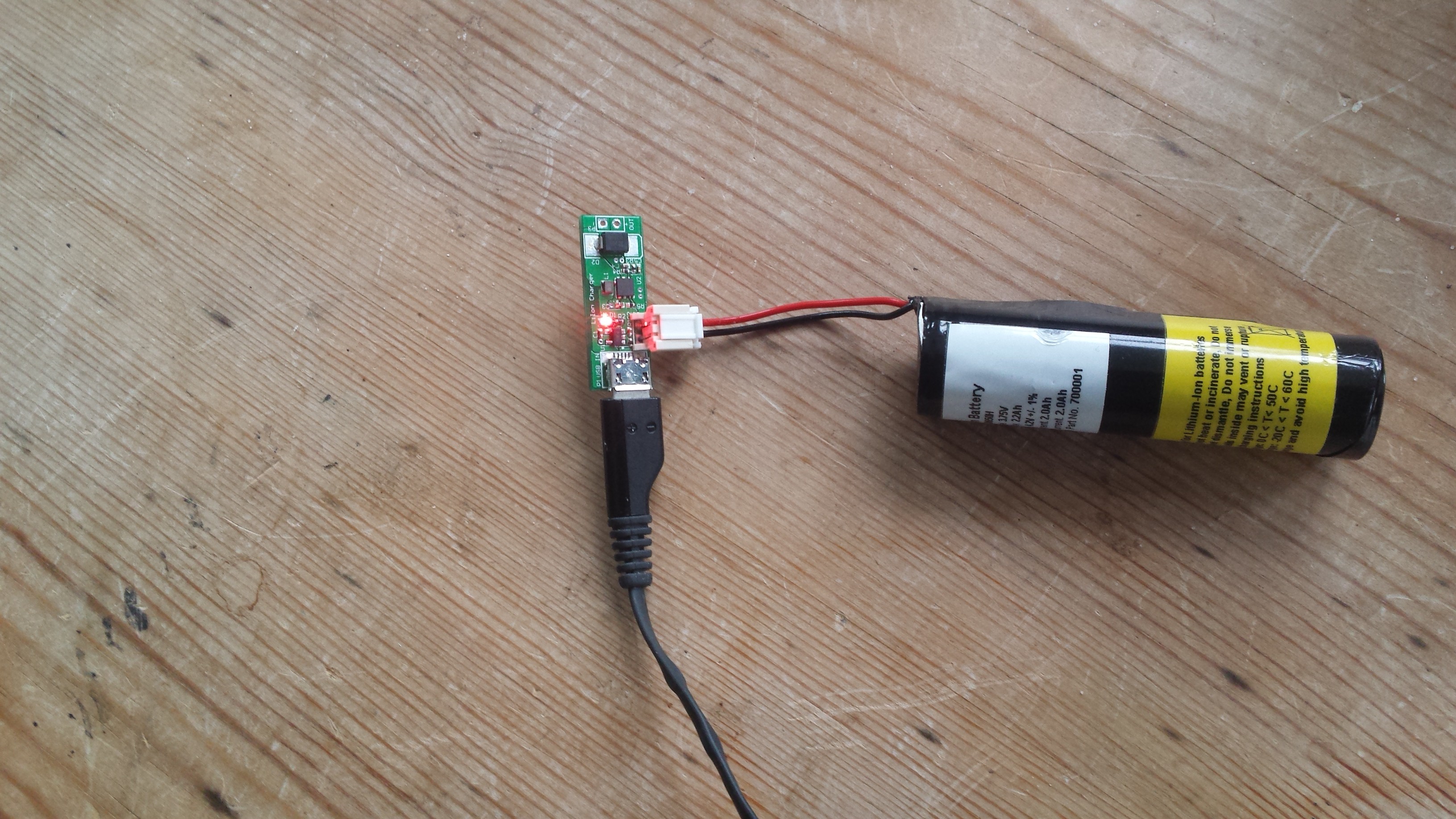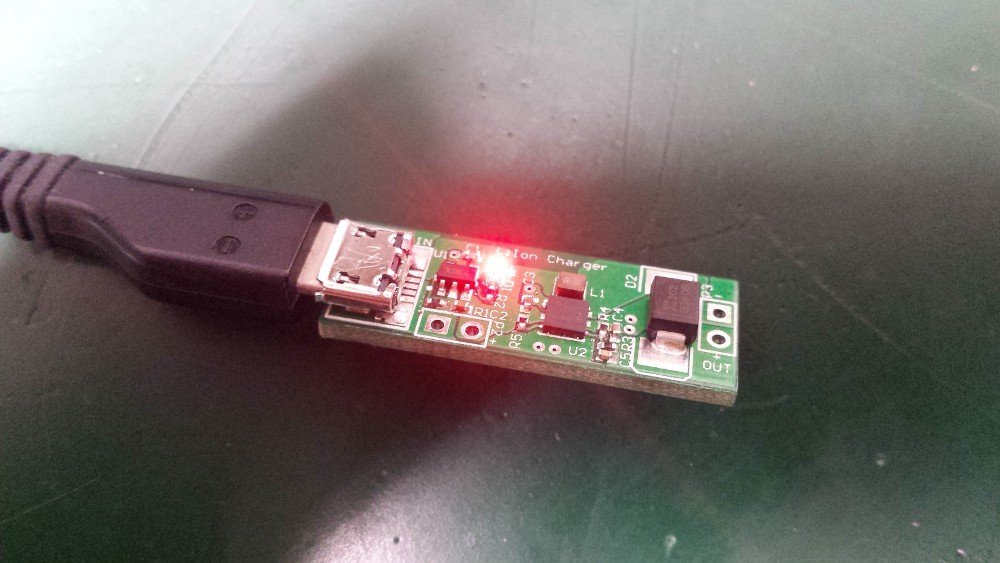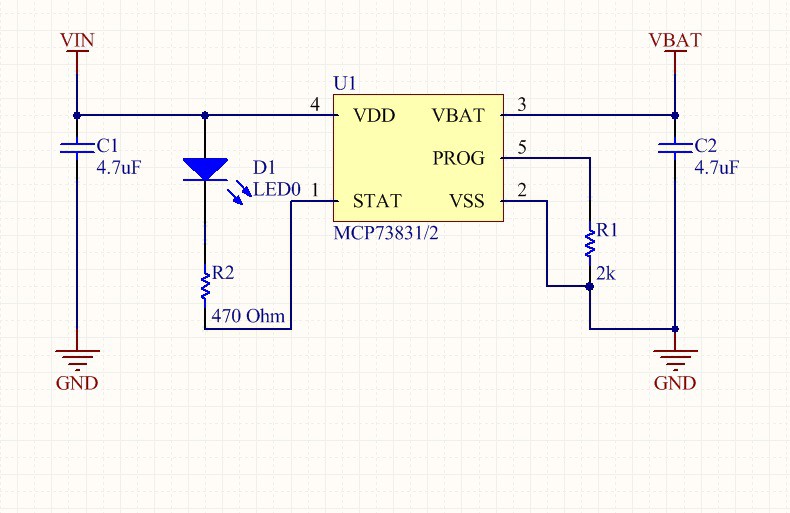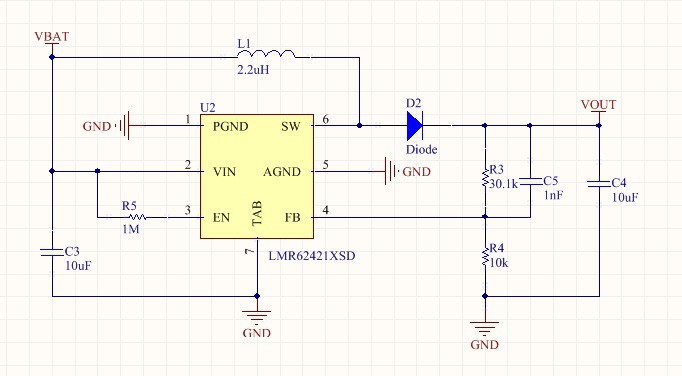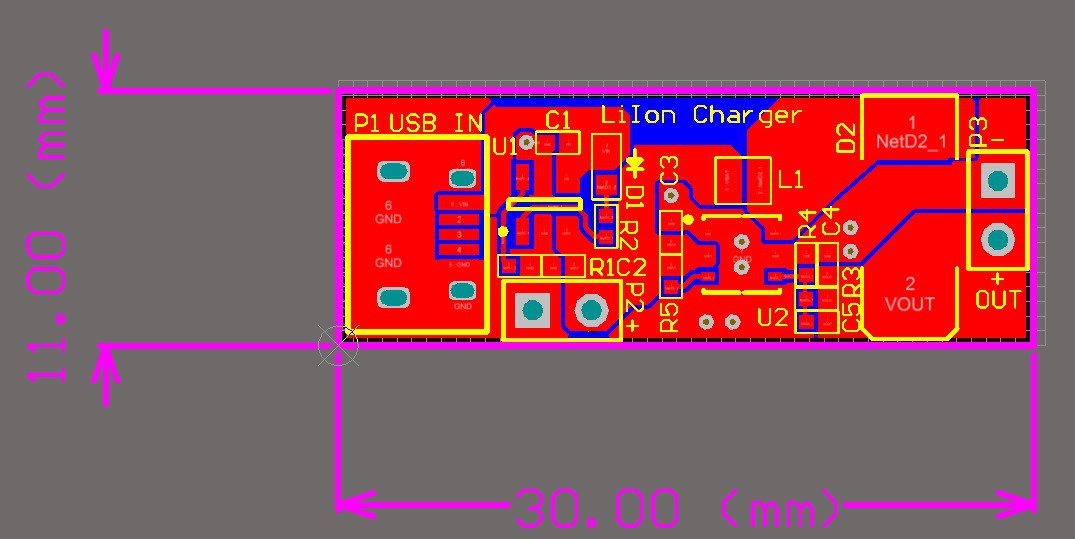-
Still attached to eyebrows...
04/03/2015 at 12:17 • 0 commentsWell, I wired up a test battery to the pcb, and it charged up. It took around 4/5 hours, which was as I expected, its an old 2.2Ahr battery and the charging current is limites to 500mA.
I took a few voltage measurements along the way to check it was actually charging, and it stopped around 4.2V.
Next step is to connect a recycled battery to it and take some proper voltage/current measurements. Then its finished and I'm good to bung it in a project.
Ive hacked apart my first Makita battery and extracted 4 candidate cells, the rest are nackered by the looks of it.
![]()
-
It liiiiives
03/30/2015 at 19:50 • 0 commentsWell, components have arrived, pcb is assembled with tweezers and a distinct lack of breathing hard and at first power-up it seems to work.
![]()
I'm getting around 4V at the battery connection, and a healthy 5.04V at the output. Tomorrow I'll connect a test battery and see if it explodes..................
-
Pigeon Messenger from China finally arrived!
03/16/2015 at 20:11 • 0 commentsMy pcbs have finally arrived after mucho anticipation, bit of a bargain, Seeed studio had a Chinese New Year offer of free delivery, so for two projects, 20 pcbs, £13 to my door.... Not too shabby...
Now to order the components.. To Farnell!
![]()
-
Component Selection/Design
02/23/2015 at 06:14 • 0 commentsFor the charging circuit I selected the MCP73832 Microchip LiIon /LiPo charger, this will charge at a selectable rate up to 500mA, is very small, 5 lead SOT-23 package and is around £0.40.
For the Boost circuit I selected the Texas Instruments LMR62421 Boost convertor, as these can deliver up to 2.1A, up to 24V out, is a 3mm x 3mm QFN package, and costs around £0.87.
The charging circuit is as follows:
R1 sets the charging current to 500mA, and the LED lights up when charging is in progress.![]()
The Boost Circuit is as follows:
I managed to squeeze the pcb into a footprint of 11mm x 30mm, which should easily be small enough to be directly mounted on the cell, and is not much wider than the micro USB socket.![]()
The use of planes instead of tracks should allow for a large current flow.![]()
I've ordered the PCBs from SeeedStudio and am now playing the waiting game, hoping it works!
Recycled Single Cell Charger
This is a single cell battery charger/boost convertor circuit
 FrazzledBadger
FrazzledBadger